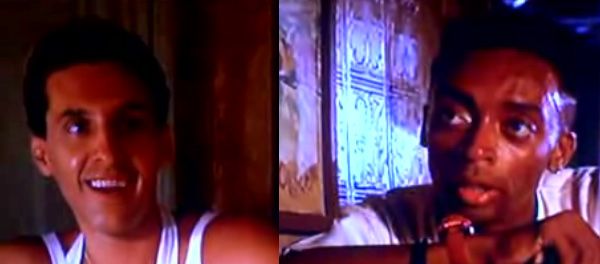The Seven Percent Solution?
(June 18, 2008)
DNA testing adds new complexities to the question about physical similarities between African-Americans and Italian-Americans.
Opening an i-italy dialogue on race, the editors recently posted a video clip of Spike Lee’s classic 1989 film Do the Right Thing. In the clip, a conversation takes place at Sal’s Famous Pizzeria in the black Bedford-Stuyvesant section of Brooklyn between the delivery boy Mookie (Spike Lee) and Pino (John Turturro), a son of the pizzeria owner.
The conversation lets both men clumsily reveal the depths of their racial hatred and mutual envy. Surrounded by cheap watercolors of Rome and pictures of famous crooners and hitters like Sinatra and DiMaggio, Mookie, angered by the absence of African-American faces, asks Pino to name his favorite stars. Pino mentions Magic Johnson, Eddie Murphy, and Prince. When asked how he can admire these black men but hate the African-Americans in the neighborhood where he works, an appalled and confused Pino responds, “They’re not niggers. I mean they’re not black. Let me explain myself – they’re black, but they’re not really black.”
In a coup de grace, Mookie asks, “Pino, don’t deep down inside you wish you were black?” Mookie suggests that the olive-skinned, kinky-haired man resents his African-American nemesis because he resembles him. “You know what they say about dark Eye-talians.”
Mookie’s statement about the physical similarities between southern Italians and African-Americans has infuriated some Italian-Americans who, like Pino, don’t want to accept its logical implication. Yet the southern Italian, living on land conquered and re-conquered, a land that borders Africa would most likely have some African blood. Mookie’s remark, long haunting southern Italians, has been silenced by denial.
Northern Italians have certainly acted upon their own racial prejudice toward their southern countryman. In Italy the southerner is the symbol of the uneducated “other,” dark as the earth he labored; and political movements like the Lombard League have legitimized northerners’ anger toward the south by claiming that the impoverished Mezzogiorno is draining resources from the heavily taxed north. The northern judgment that southerners are responsible for their own poverty echoes the generations-old American lament against blacks on welfare.
There is a large difference, however, between Mookie asking his question in 1989 and posing it today. Through scientific advances, we now have DNA testing that can reveal our genetic breakdown. A couple of years ago, my brother, Bob, a prosecutor and expert on DNA testing, was offered the opportunity to learn his genetic makeup at a conference he attended. He took the simple cheek swab test.
My brother’s DNA (I’m fifty percent likely to share the same) was broken down as 85 percent European, 8 percent Asian, and 7 percent sub-Saharan African.
So there is it – our seven percent connection with African-Americans. Our family is from the provinces of Avellino and Basilicata, fairly “north” on the scale that southern Italians use to judge each other. We don’t share the tightly curled hair and olive skin of Turturro, who has Sicilian roots. Dare we ask what Pino’s genetic breakdown might have been?
Today, unlike 1989, we can no longer deny Mookie’s taunting claim about “dark Eye-talians.” But can we also move beyond the skeptical taunts and mutual hatred among all the ethnic groups that Spike Lee portrayed in Do the Right Thing? Can we think and talk about race and identity in more complicated ways, as Barack Obama has done both in his memoirs and on the campaign trail? For we are more of a family than we may have previously imagined.



